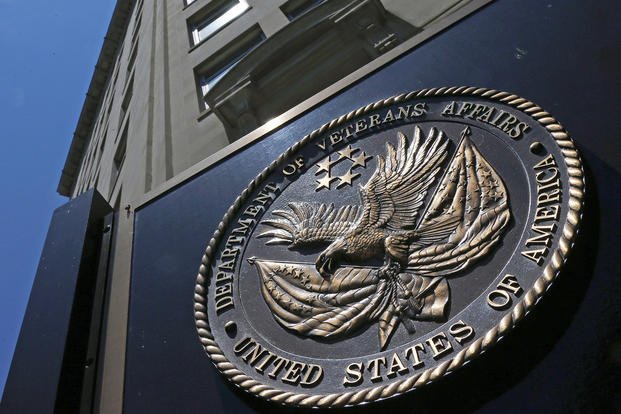After more than a decade, veteran access to timely health care is still the No. 1 challenge for the Department of Veterans Affairs, according to a government watchdog.
The Government Accountability Office unveiled the finding as part of its annual High Risk List of recommendations for the federal government, released in May. The agency says it first raised concerns in 2012 about the VA's "difficulties" in overseeing veteran health care, including primary care.
How is it that the VA has not knocked timely health care from the top of the list of concerns? According to the GAO, by not fixing the problems that the watchdog agency identified 10 years ago. The GAO's report, made public May 30, shows that while the VA has made progress, many old issues are still unresolved.
Read Next: Army Avoids War Hero Names as Fort Bragg Instead Becomes Fort Liberty
The two main problems besetting the agency both have to do with how the VA defines acceptable wait times, and how it tracks appointments, according to the GAO.
First, it should be easier for veterans to pick a date that's convenient for them to be seen quickly, but existing VA policy is not helping. The report states that "clarifying the scheduling policy to better define the desired date" is one way to help veterans.
A second issue is that the VA's own definitions and policies regarding wait times are vague. This makes it difficult for leaders to make consistent measurements. The flexible standards for success or failure lead to mistakes in scheduling appointments. Per the GAO's report, the solution is to identify "clearer wait time measures that are not subject to interpretation and prone to scheduler error."
When the GAO's health care section recommended that the VA address wait times for veterans, in 2012, the original report identified a similar set of challenges resulting in unusually long waits for appointments.
Back then, it offered two solutions. It was suggested that the VA improve its online tools for coordinating appointments and prescriptions. First launched in 2003, My HealthEVet went through several upgrades after the GAO made its recommendations.
"According to VA officials, the department is in the process of implementing a new scheduling system (integral to its new electronic record system) that officials believe is a key part of addressing our recommendation," the GAO report reads. "The system has a targeted national completion date of 2027."
A more controversial solution to the problem of wait times involved the VA outsourcing some patient care to private doctors.
As reported by Military.com in January, the initiative has had mixed results. About 90% of VA medical centers, or VAMCs, reported scheduling at least half their veterans' appointments with health care specialists within the three-day period required under VA policy, suggesting that opening the initiative was a success.
But fewer than 40% were able to do the same for more broader community-based care, where the standard is seven days. Some veterans waited longer for community care -- a month or more -- than they would have waited for care within a VAMC. That suggests the private health care solution favored by some won't actually alleviate veteran wait times, and could make them worse.
The VA's struggles with wait times go back years, and hit a nadir in 2014.
That year, its problems came into sharp focus when it was reported that 40 veterans had died waiting for medical care. Subsequent investigations turned up many of the same concerns that the GAO had voiced in 2013; spurred in-depth reporting by national outlets including The New York Times; and showed that more than 125,000 veterans had waited too long for appointments.
The scandal revealed that some VA employees had conspired to cover up data that made the department look bad.
The scandals shook the agency and led to the resignation of VA Secretary Eric Shinseki, who had earlier served as Army chief of staff. Although older veterans had memories of how, during the Vietnam era and earlier, VA medical centers were viewed with skepticism or even hostility, that reputation had for the most part been rehabilitated with younger veterans. Those scandals set the VA's reputation back decades.
VA leaders are hopeful that they will meet the goal of streamlining the agency’s system to make wait times standard and measurable by 2027. In a statement delivered by email, it stressed their commitment to transparent data about wait times, and a commitment to resolving the issues highlighted by veterans and by the GAO's reports.
"There is nothing more important to VA than providing veterans with the world-class care they deserve -- whenever they need it, wherever they need it," said Terrence Hayes, VA press secretary, via email. "We are constantly working to minimize wait times for the veterans we serve, regardless of whether that care is delivered at VA hospitals, veterans' homes (including via telehealth), or community hospitals."
Hayes said the agency is currently providing more care to more veterans than ever before in its history. It had 332 million veteran health care appointments during the COVID-19 pandemic, he said.
Hayes added that the Access to Care website gives transparent information about local wait times at various VAMCs, and criteria for calculating wait times are defined on the site. "We are using veteran feedback to continue improving how we measure and publicly report this information," he said.
-- Adrian Bonenberger, an Army veteran and graduate of the Columbia University Graduate School of Journalism, reports for Military.com. He can be reached at adrian.bonenberger@monster.com.
Related: 2 Lawmakers Trying to Expand Access to Outside Doctors for Vets Despite VA Push to Rein in Costs










